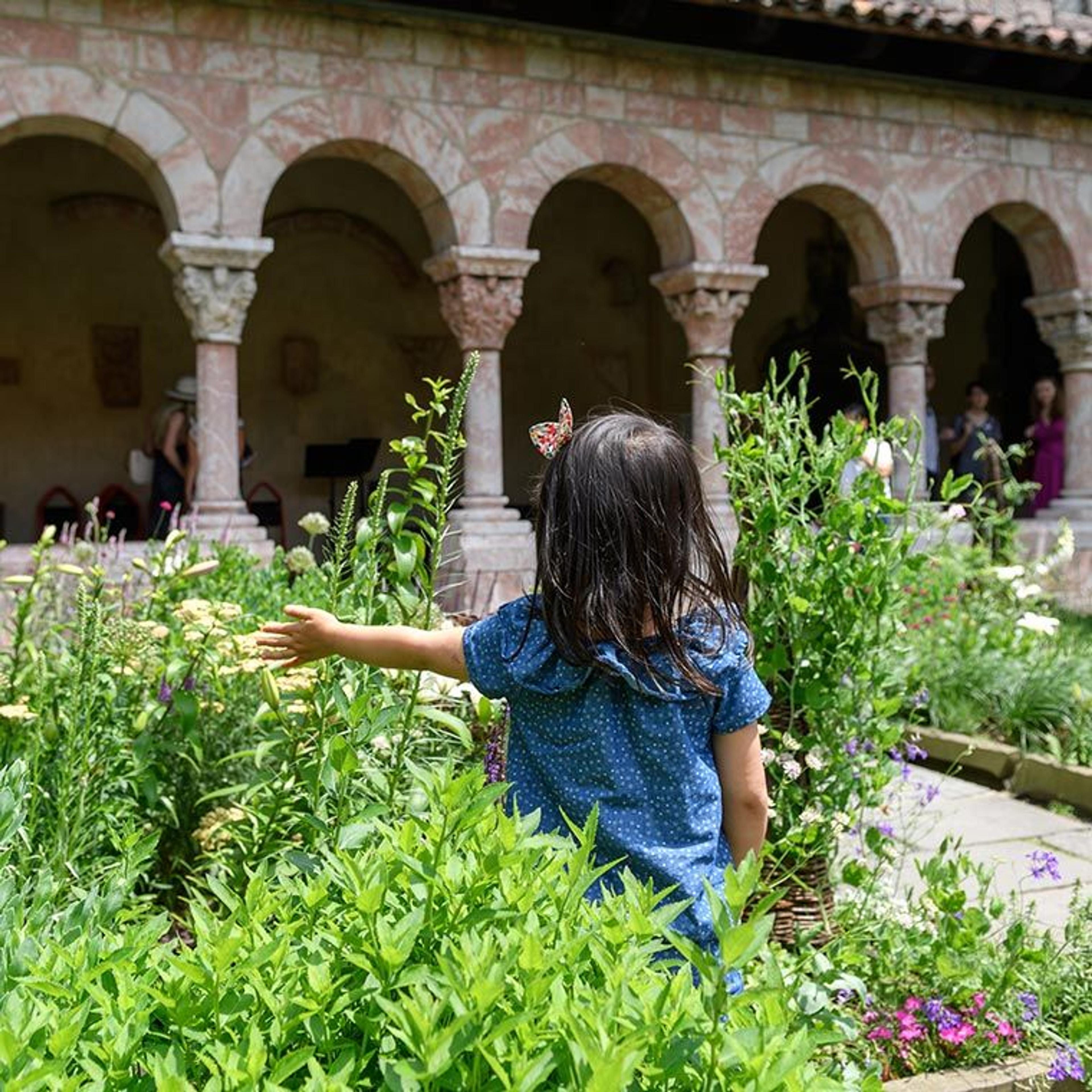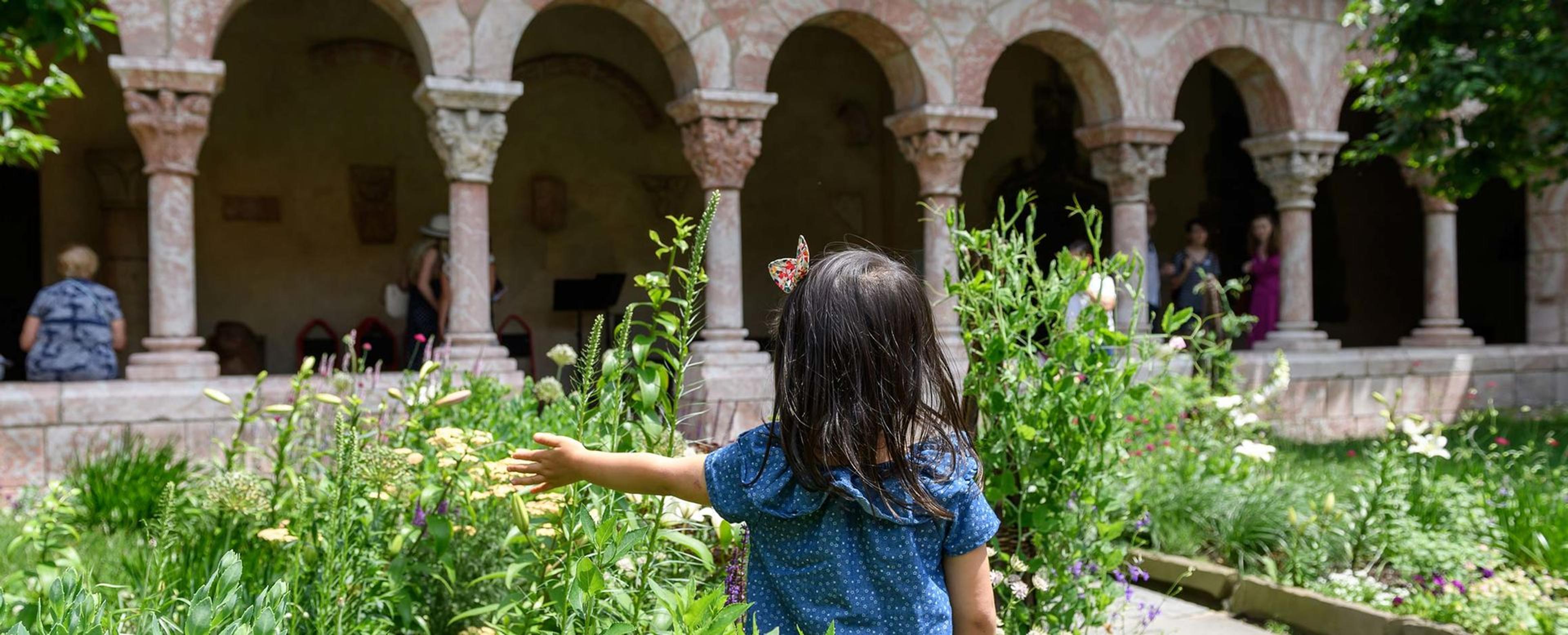
Photo by Filip Wolak
In the Middle Ages (the period of European history from about 500 to about 1500 A.D.), life was closely connected to the rhythms and cycles of nature. Medieval herbs were transformed into medicine, food, beverages, dyes, and fiber (a material, such as cloth), and some were even thought to hold magical properties. At The Met Cloisters, many of these useful plants grow in the Bonnefont Herb Garden, which is designed with a series of raised garden beds that are organized according to how each plant is used. The “medieval vegetable and salad” garden bed includes plants such as garlic, parsley, and kale, which were common staples in the medieval diet and are still eaten today. Let's learn more about some of these plants with an activity you can do yourself, wherever you are!
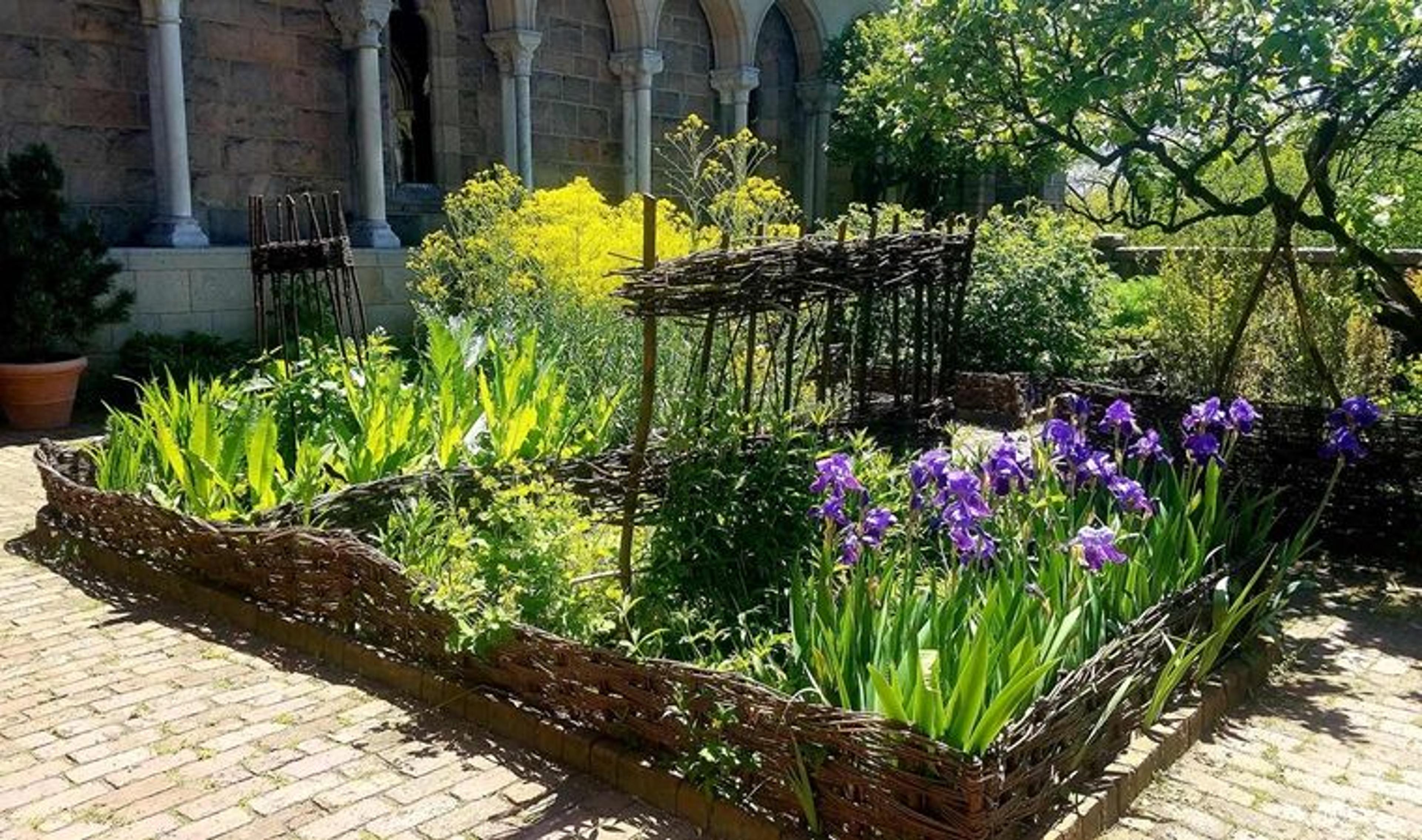
A view of a garden bed in the Bonnefont Herb Garden in May.
In our garden bed devoted to "plants used by medieval artists" (pictured above), visitors are often in awe of the golden-yellow juice that the stalk of the greater celandine (Chelidonium majus) plant releases when it is broken. Artists used this juice as a substitute for gold in medieval manuscripts (a book or document written by hand). The petals of the purple iris flower (Iris germanica) were mixed with alum (a chemical used for making paints) and used in medieval illumination (designs or pictures in gold or colors), the mixture was called "iris green. " It took a lot of creative thinking (and trial and error) for medieval people to discover this.
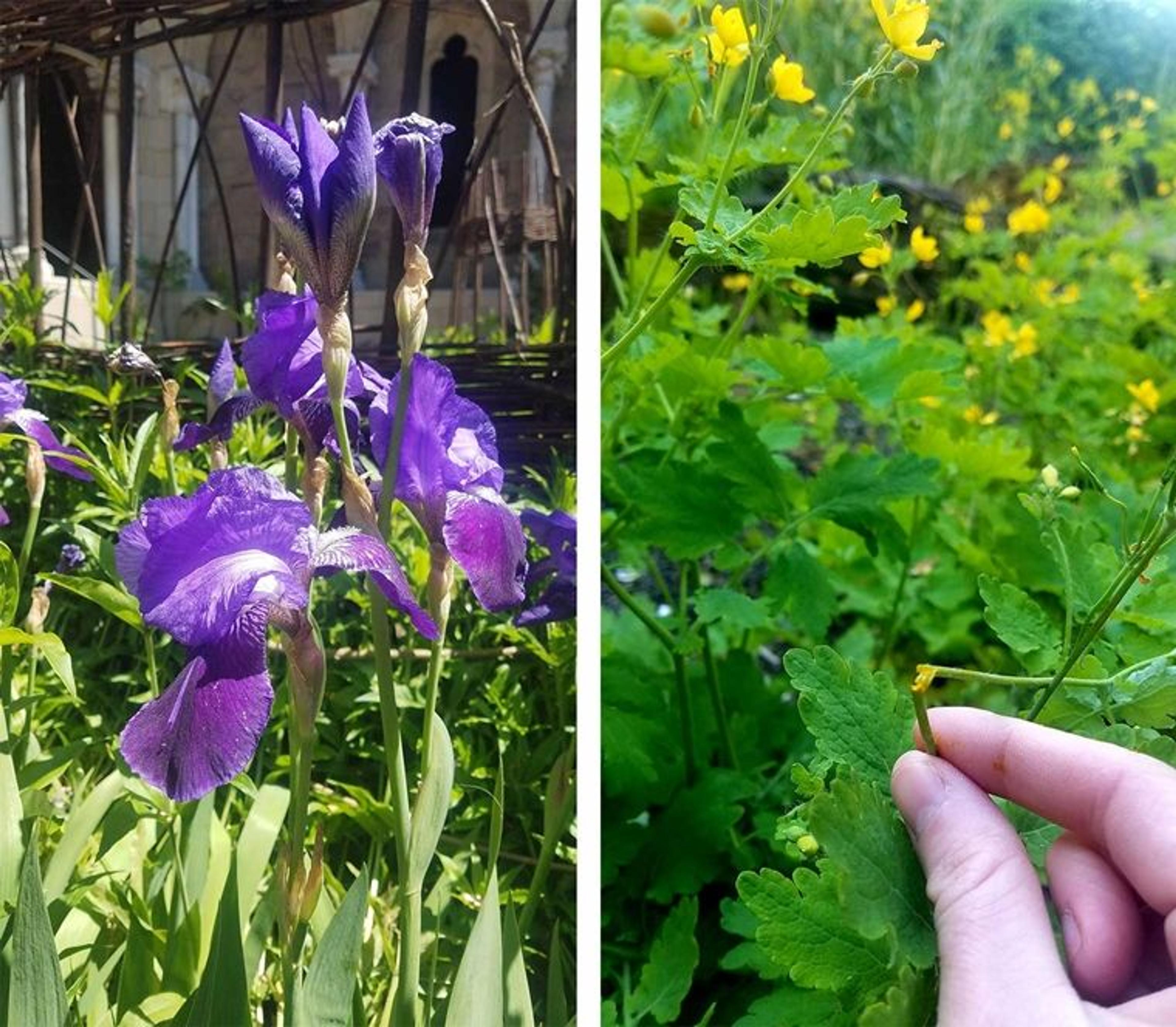
Left: The iris flower, which was used to make "iris green" paint. Right: the juice of a broken greater celandine stalk, which was used by artists as a substitute for gold.
In our garden bed devoted to "plants used in the medieval household," English lavender (Lavandula angustifolia) and plants of the genus Artemisia like southerwood were known as "strewing herbs" because they were scattered on the floor (or "strewn about") to release their pleasant odors. Many flowers—such as roses (Rosa gallica), violets (Viola sp.) and pinks (Dianthus sp.)—were admired for their beauty as well as their useful fragrances. Rose petals were dried and used to perfume drawers. They could be soaked in water and transformed into rose water. Rose water was used for medical purposes during the medieval ages. It was also used for bathing. What scents would you save if you could? Consider your own home, and the plants that you may use for fragrances.
Activity
Let's discover and observe plants in our local surroundings. With these fun, easy steps, you can collect plant elements, create a collage with your collection at home, and finish with a plant rubbings activity. Pretty soon, you will be able to identify medieval plants; admire beautiful budding trees, shrubs, and flowers; and ignite your curiosity for the use and role of plants in your own life.
Things you will need for plant collection:
• Gloves
• Small basket or container for your collection
• Small scissors
Things you will need for collage and rubbing:
• Sheet of white paper
• Pencil and/or fine point pen
• Scissors
• Glue or tape
• Camera/smartphone to capture a before-and-after picture
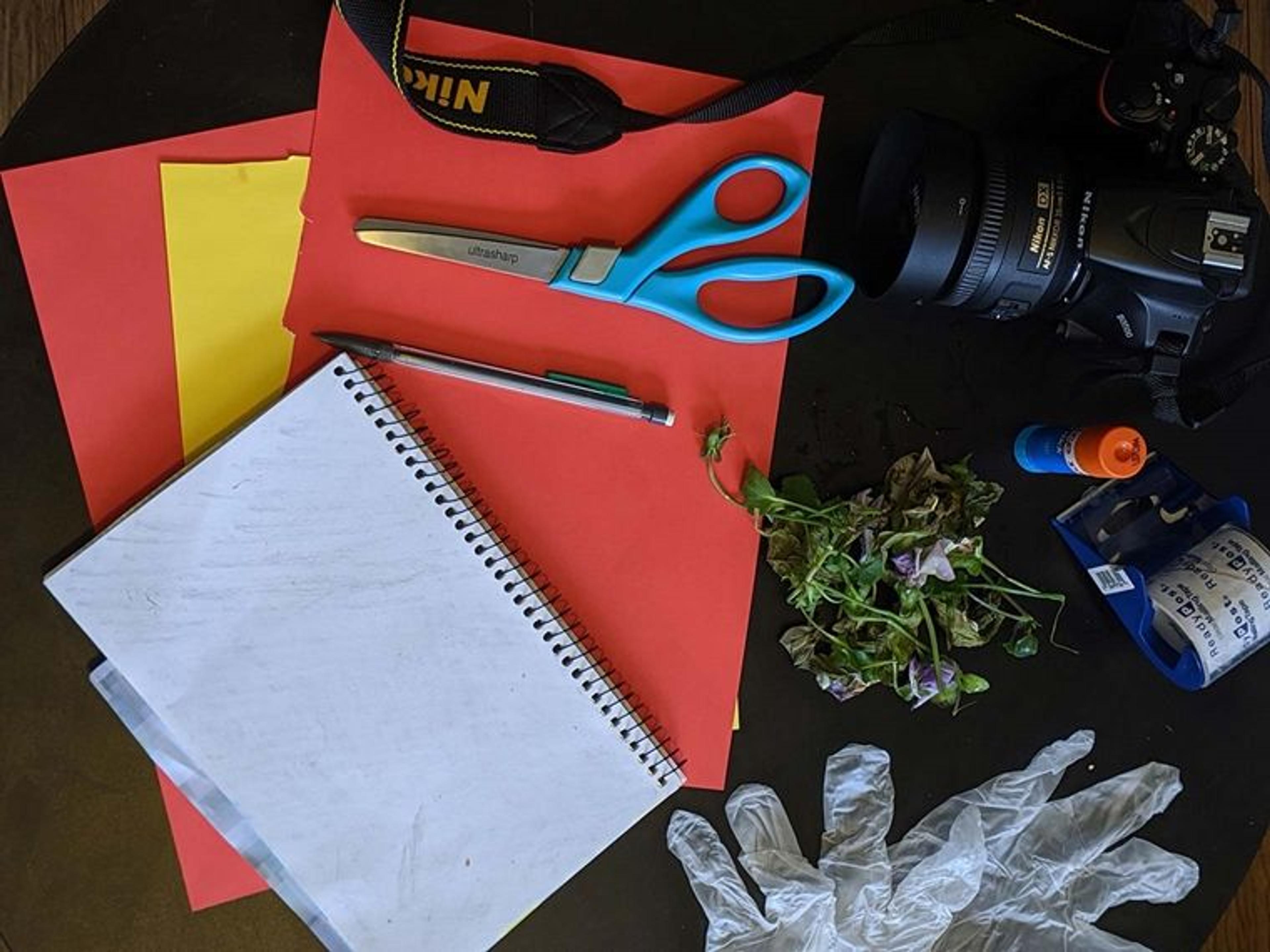
Step 1. Grab your gloves, basket, and scissors and head to a park or yard to explore your local plants. Look for textures, colors, and flowers. What is your eye drawn to? Describe the smells you are experiencing to your grown-up.
Tip: Even if you don't have a lot of space, there are lots of creative ways to grow your own garden. You can grow a small garden in your windowsill! Or find a sunny spot in your home to hang plants.
Step 2. Safely collect an assortment of different shapes and sizes of flowers, leaves, seeds, and buds. Feel free to include other natural elements like stones or sticks. Download and print out this handy field guide (PDF) to try to identify and collect some common medieval plants.
Step 3. Bring your collection home. And don’t forget to wash your hands when you’re back inside!
Step 4. Take out a sheet of white paper and set up a collage with all the different flowers and leaves that you collected to create your own garden scene. Observe the colors and shapes of the leaves. Take time to arrange the plants into an organic collage. Use the petals and leaves to recreate a miniature garden.
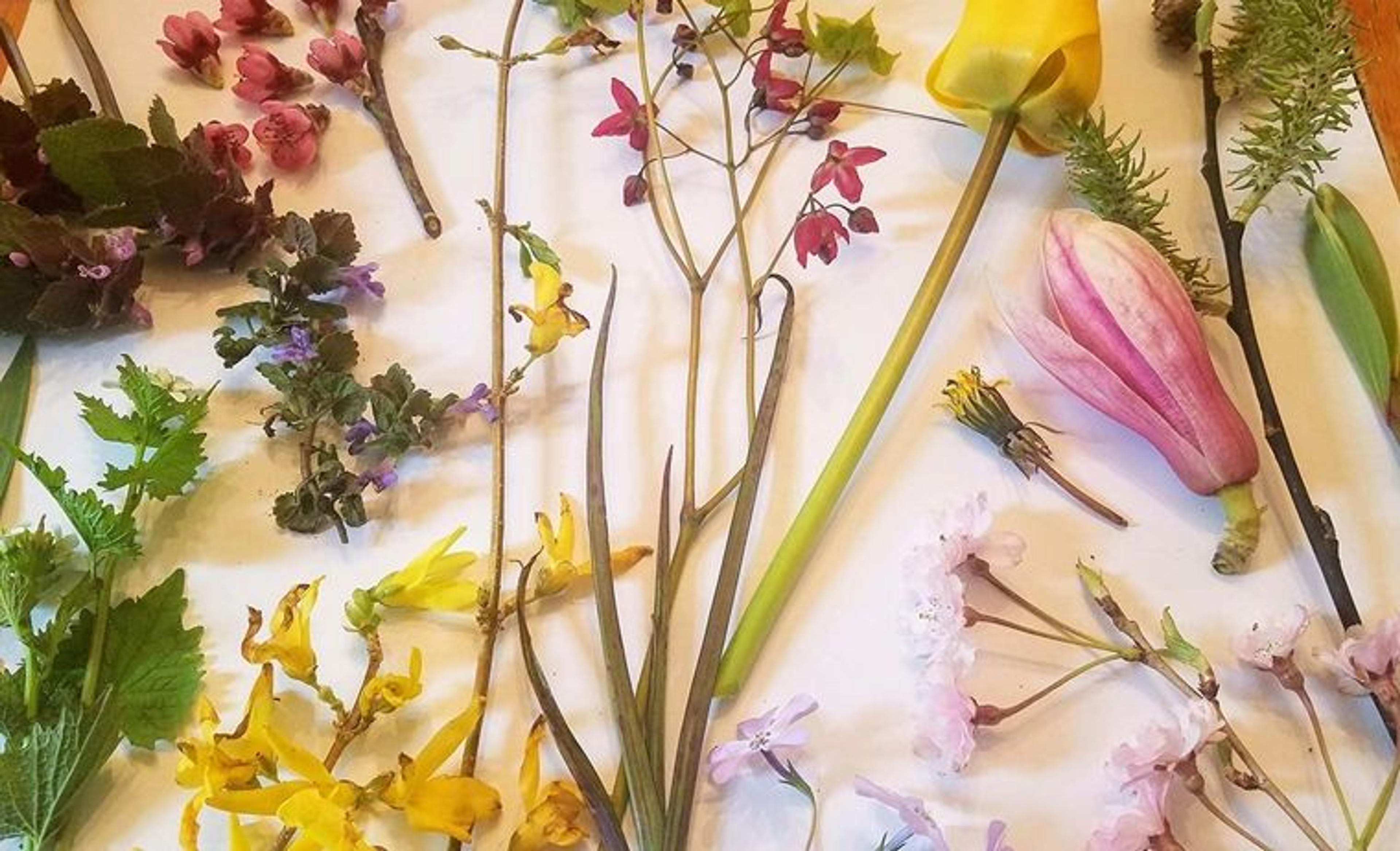
Step 5. Trace an outline of each plant on your paper, drawing the full shape or focusing on a detail of each plant. What is your favorite part of this plant?
Step 6. Begin to explore other uses for the plants by pressing and rubbing them on the paper where you drew them. What color does each plant and flower produce on the paper? Which plants release an odor when they are pressed? What surprised you about the colors or scents you uncovered?

Step 7. Write short, descriptive notes about each plant that you collected and how you obtained the color on the page. For example: juice from purple iris flower, pollen from dandelion flower, chlorophyll (a green pigment) from plant leaf.
Great job! You completed the plant discovery! Step back, give yourself a pat on the back, and admire your work.
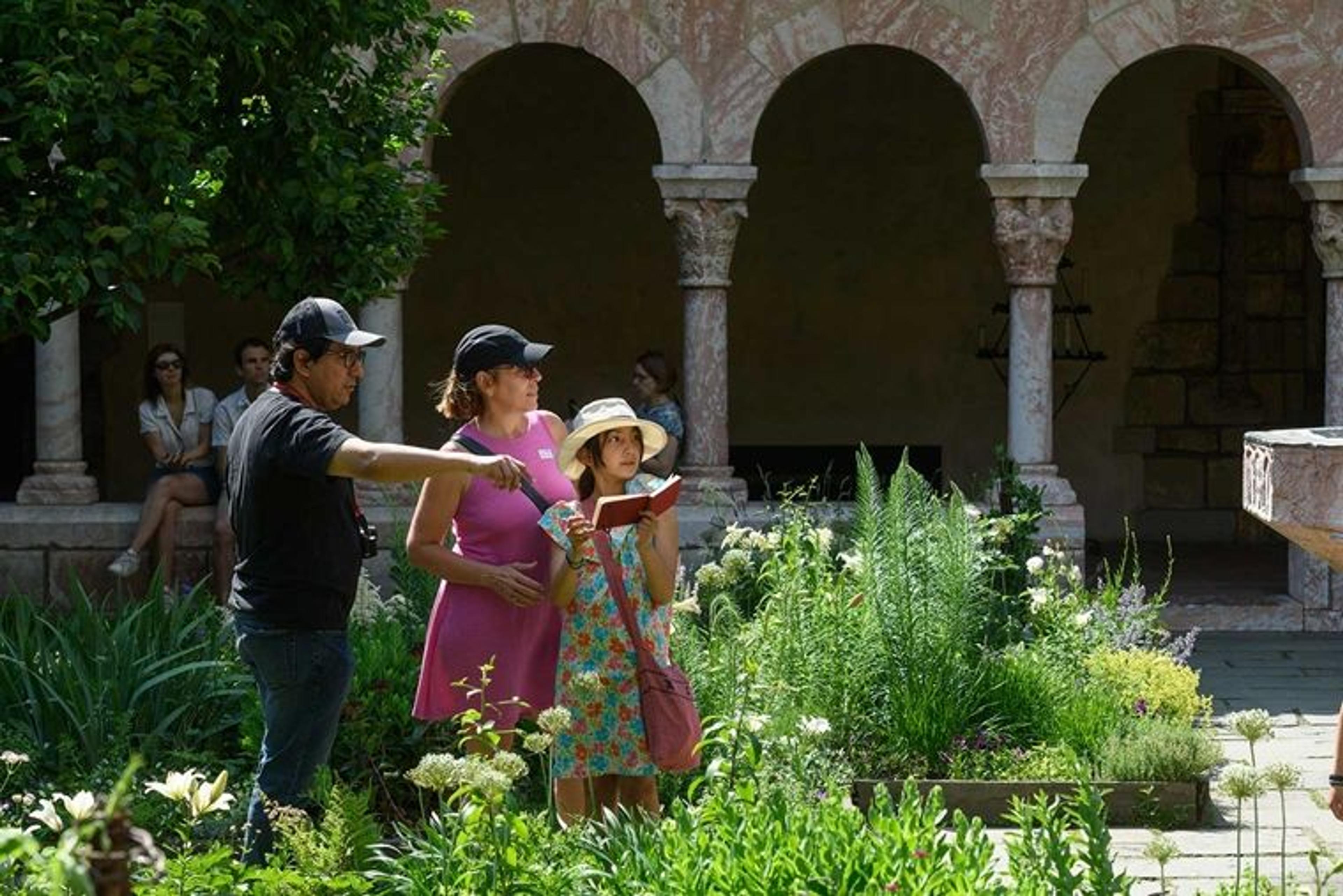
Photo by Filip Wolak
Want to share your discoveries? Email pictures of your new collection and drawings to #MetKids at MetKids@metmuseum.org. We look forward to seeing you in The Met Cloisters gardens when the Museum reopens. Come visit us! The Cloisters gardeners are on site tending to the gardens Monday–Friday.
Click here to download our plant field guide (PDF).
Photos by Carly Still unless otherwise noted.
